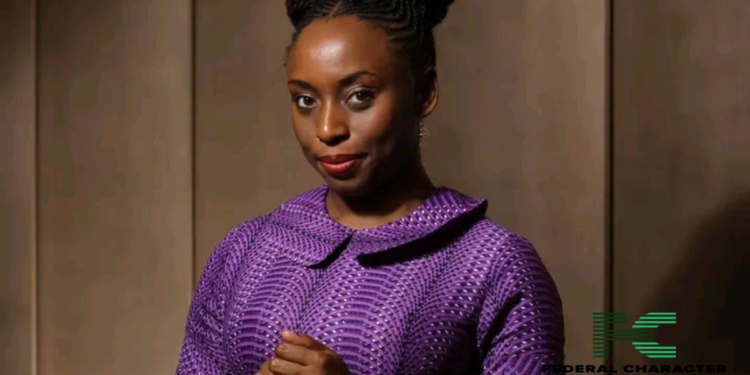Discovering the Literary Gem:

Sundays, a day reserved for the joy of reading, have been the source of some of my fondest memories. Among the countless books that have graced my hands, one stands out with a nostalgic glow – “Purple Hibiscus” by Chimamanda Ngozi Adichie. Transported back to my secondary school days, my worn copy bore the battle scars of food stains, a testament to the countless times I immersed myself in its captivating narrative
A Story of Tyranny and Hope

Fifteen-year-old Kambili narrates her life under the iron fist of her father, Eugene. A wealthy businessman and prominent figure, Eugene presents a facade of righteousness, championing good causes while unleashing cruelty within his own home. Kambili, her brother Jaja, and their mother, Beatrice, endure his physical and psychological abuse, their spirits slowly withering.
Eugene’s tyrannical nature is evident in his chilling words: “You are eating ten minutes before Mass? Ten minutes before Mass?” His rage is fueled by Kambili’s “period cramps,” a mere excuse for his monstrous behavior. Adichie masterfully portrays the power dynamics of abuse, leaving the reader both horrified and captivated.
A Glimpse of Light: Auntie Ifeoma’s Sanctuary

But amidst the darkness, a glimmer of hope emerges in the form of Auntie Ifeoma, Eugene’s sister. Independent, warm, and embracing tradition, she offers a stark contrast to Eugene’s rigidity. Her home, though filled with laughter and love, stands in stark contrast to the Achike household, devoid of joy.
Remember the vibrant atmosphere of Auntie Ifeoma’s house? “Laughter always rang out in Aunty Ifeoma’s house, and no matter where the laughter came from, it bounced around all the walls, all the rooms.” This infectious joy becomes a beacon for Kambili and Jaja, a taste of a life they never knew existed.
Beyond the Surface: Exploring Complexities

“Purple Hibiscus” delves deeper than just a coming-of-age story. It tackles religion, hypocrisy, politics, and cultural clashes. We see the complex nature of Eugene, a man who champions good while inflicting pain. We witness Kambili’s innocent crush on Father Amadi, a reminder of the desires and dreams hidden beneath the weight of abuse.
And then there’s the symbolic purple hibiscus, a flower defying nature with its vibrant hue. It represents Jaja’s newfound passion for gardening, a symbol of his own personal growth and rebellion against his father’s control.
A Masterful Narrative with a Lingering Impact

Adichie’s storytelling is masterful. Her characters are richly developed, their struggles and triumphs resonating deeply. The first-person narration, with its inherent subjectivity, adds another layer of intrigue, inviting the reader to question and contemplate.
As the narrative unfolds, tragedy strikes with Papa’s sudden death, revealing a poisoned fate. The aftermath sees Jaja confessing to a crime he did not commit, Mama’s desperate efforts to save him, and a glimmer of hope as they plan for a better future after Jaja’s release from prison.
The Unfinished Symphony:

The only lament in this literary journey is the desire for more, a glimpse into what happens after Jaja’s release. A cinematic adaptation beckons, yearning to witness Kambili’s character grace the screen, to visually experience the tyranny of Eugene, and to witness the purple hibiscus in its vibrant glory.
In Conclusion:
“Purple Hibiscus” is not just the best novel I’ve read; it’s a testament to Chimamanda Ngozi Adichie’s unparalleled storytelling. With each page, I find joy in the narrative, eagerly anticipating the day when this literary masterpiece graces the silver screen, bringing the characters and their tumultuous journey to life.
And remember, Chimamanda Ngozi Adichie is a literary gem, and any book from her pen is sure to be a worthwhile read.

















